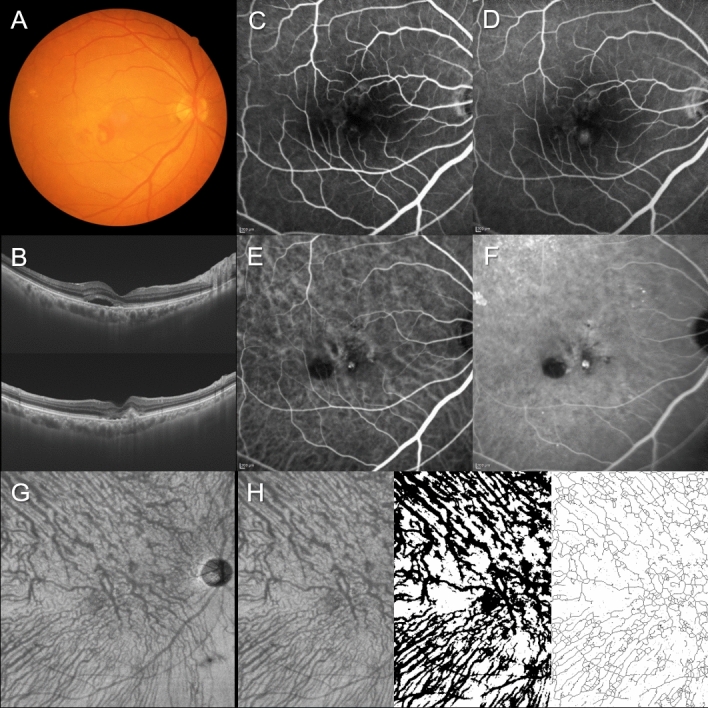Figure 4.

Images of the right eye of an 81-year-old man with polypoidal choroidal vasculopathy. The refraction was − 0.10 diopters. Best-corrected visual acuity was 0.10 logarithm of the minimum angle of resolution unit. (A) Color fundus photograph shows retinal pigment epithelium (RPE) detachments accompanied by subretinal hemorrhage and serous retinal detachment (SRD) at the macular area. (B) 12 mm horizontal and vertical B-mode optical coherence tomography (OCT) images through the fovea show dilated outer choroidal vessels (vortex veins) associated with RPE detachment and SRD. The central choroidal thickness is 256 µm. (C,D) Fluorescein angiography (early and late phases) shows window defects in the macular area and some leakage inferior to the fovea. (E,F) Indocyanine green angiography (early and late phases) shows dilated choroidal vessels and a polypoidal lesion inferior to the fovea. (G) En face OCT image (12 mm × 12 mm) shows slightly dilated vortex veins in the deep layer of the choroid. Horizontal watershed is lost because of collateral veins due to anastomoses between the superior and inferior vortex veins. (H) En face OCT image (temporal 8 mm × 12 mm), binarized image, and skeletonized image. The area, length, and mean diameter of vortex veins are 47.7 mm2, 446 mm, and 107 µm, respectively.
